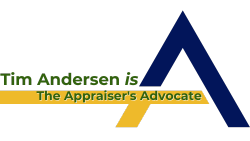Podcast: Play in new window | Download (Duration: 10:56 — 12.0MB)
“USPAP and my client’s demands” is a statement that has different meanings to different appraisers, in different contexts. Sometimes a client’s demands are completely doable. In other words, complying with them still allows you to comply with the USPAP and its ETHICS RULE. On the other hand, clients still assume they can direct an appraiser to violate USPAP. We appraisers do not like this situation. But because USPAP does not govern lenders, they can make any demands of us they want to. However, it is up to us to know what is ethical, what is not, and what is permissible, what is not.
In one context, “USPAP and my client’s demands” is benign. For example, the client demands photos of both the comparables and the subject. As well, the client demands appraiser, not a surrogate, take those photographs. Indeed, this is a common appraisal assignment condition with which appraisers are happy to comply.
However, in another context, “USPAP and my client’s demands” has a completely malevolent connotation. For example, it is common for clients to demand we appraise a parcel of industrially zoned property as if it were residentially zoned property. This is for the simple reason that there is a house on the land. However, to do so would be a serious highest and best use valuation because we cannot appraise land to one use and the improvements to another use. That would be a violation of the concept of consistent use, which is the basis of highest and best use.
So, when it comes to “USPAP and my client’s demands,” we appraisers must understand those demands with which we can comply, as well as those demands we must reject outright. USPAP’s ETHICS RULE helps us make this decision.


